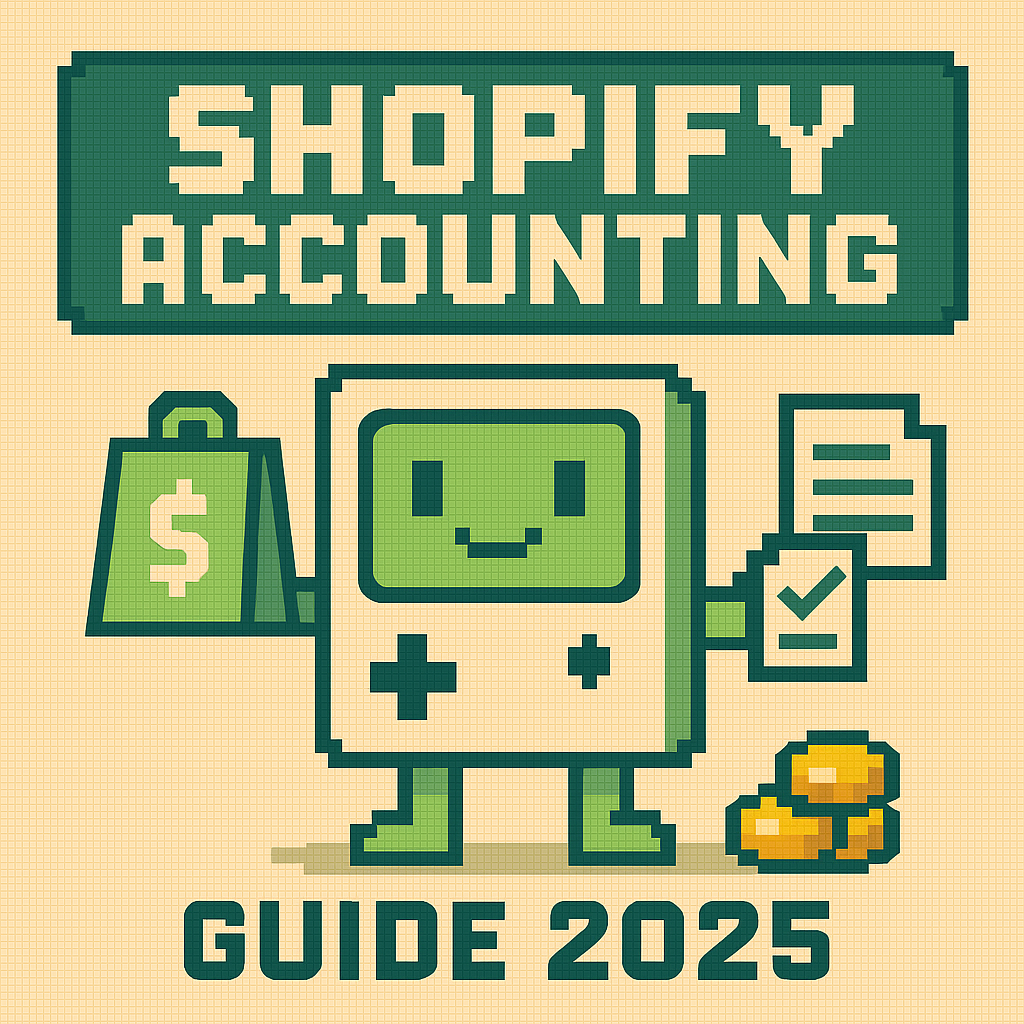Cash Flow Forecasting for DTC Brands: 13-Week Rolling Model

DTC brands face unique cash flow challenges including seasonal demand spikes, inventory investment cycles, and payment processing delays that generic forecasting templates can't handle. This guide provides a comprehensive cash flow forecasting system specifically designed for ecommerce businesses, including detailed templates and scenario planning capabilities.
Cash flow forecasting for direct-to-consumer brands differs significantly from traditional business models. You're dealing with seasonal demand spikes, inventory investment cycles that can consume months of cash flow, and payment processing delays that create timing mismatches.
Most generic cash flow templates don't account for ecommerce-specific factors like Black Friday inventory buildup, Chinese New Year supply chain disruptions, or the working capital requirements of scaling DTC operations.
Understanding Ecommerce Cash Flow Drivers
Revenue Timing Factors
Platform Payout Delays:- Shopify: 1-3 business days
- Amazon: 14-day settlement cycle
- Marketplaces: Varies by platform and seller history
- Q4 typically represents 35-45% of annual sales
- Back-to-school and holiday preparation create mid-year spikes
- January-February often show 40-60% decline from December
- Credit cards: Immediate processing
- Buy-now-pay-later: Extended settlement terms
- International sales: Currency conversion delays
Cash Outflow Patterns
Inventory Investment Cycles:- Lead times of 30-120 days for manufactured products
- Payment terms typically 30-50% deposit, balance on completion
- Shipping and customs clearance add 2-6 weeks
- Marketing spend increases 200-400% during Q4
- Warehouse and fulfillment costs spike with volume
- Return processing costs peak in January
- Accounts receivable from platform settlements
- Inventory investment often 25-40% of annual revenue
- Accounts payable optimization for supplier terms
Key Ecommerce Cash Flow Metrics
- • Cash conversion cycle: Days from inventory purchase to cash collection
- • Inventory turns: How quickly inventory converts to sales
- • Seasonal cash requirement: Peak working capital needs
- • Platform settlement timing: Delay between sale and cash receipt
Building Your 13-Week Rolling Forecast
Week-by-Week Revenue Modeling
Historical Pattern Analysis: Analyze 2-3 years of weekly sales data to identify:- Seasonal patterns and peaks
- Promotional lift from marketing campaigns
- External factors (holidays, economic events)
- Growth trends and baseline changes
Weekly Revenue Formula:
Weekly Revenue = (Baseline Sales × Seasonal Factor × Growth Factor) + Promotional LiftExample calculation:
Baseline: $50,000/week
Seasonal factor (Black Friday week): 3.2x
Growth factor (YoY): 1.25x
Promotional lift: $75,000
Total forecasted revenue: ($50,000 × 3.2 × 1.25) + $75,000 = $275,000Cash Collection Modeling
Platform-Specific Collection Patterns:
Shopify Sales (3-day delay):
Week 1 sales: $100,000
Cash collected: Week 1 = $0, Week 2 = $100,000Amazon Sales (14-day delay): Week 1 sales: $50,000 Cash collected: Week 3 = $50,000
- 60% Shopify (3-day delay)
- 30% Amazon (14-day delay)
- 10% Other marketplaces (7-day average delay)
Inventory Investment Planning
Inventory Purchase Timing:
Target inventory level: 8 weeks of projected sales
Current inventory: 4 weeks
Reorder lead time: 6 weeks
Order placement: Week 2 (to receive Week 8)Cash Flow Impact:
Order value: $200,000
Deposit (40%): $80,000 due Week 2
Balance (60%): $120,000 due Week 6
Inventory receipt: Week 8
Sales conversion: Weeks 8-16Cash Flow Forecasting Template Structure
Revenue Forecast Components
Key Data Points:- Week ending date
- Historical sales (same week prior year)
- Seasonal adjustment factor
- Growth rate assumption
- Marketing campaign impact
- Total forecasted revenue
- Platform mix (Shopify/Amazon/Other)
Cash Collection Tracking
Essential Columns:- Revenue by platform
- Collection delay by platform
- Weekly cash collections
- Cumulative receivables balance
- Collection efficiency tracking
Inventory Planning Framework
Planning Elements:- Weekly sales forecast
- Current inventory levels
- Weeks of supply remaining
- Reorder points and quantities
- Purchase order timing
- Payment schedule (deposits/balances)
Operating Expense Modeling
Expense Categories:- Fixed monthly expenses (rent, software, salaries)
- Variable expenses (% of revenue)
- Seasonal adjustments (marketing, fulfillment)
- One-time expenses (equipment, projects)
- Payment timing (monthly/quarterly)
Cash Flow Summary Dashboard
Key Metrics:- Opening cash balance
- Weekly cash receipts
- Weekly cash disbursements
- Net cash flow
- Cumulative cash balance
- Minimum cash requirement
- Funding gap/surplus
Implementation Guide
Build your forecasting system using spreadsheet software with automated formulas, seasonal adjustment factors, and scenario planning capabilities. Start with basic weekly projections and gradually add complexity as your forecasting accuracy improves.
Scenario Planning for DTC Brands
Base Case Scenario
Assumptions:- Historical growth trends continue
- Seasonal patterns repeat prior year
- No major supply chain disruptions
- Marketing efficiency remains constant
Optimistic Scenario (20% probability)
Key changes:- 25% higher conversion rates from new creative
- Earlier holiday shopping season
- Successful product launch driving 40% incremental sales
- Improved supplier terms extending payment periods
Pessimistic Scenario (20% probability)
Risk factors:- Economic recession reducing consumer spending 30%
- Supply chain disruption delaying Q4 inventory
- Platform policy changes affecting organic reach
- Increased competition driving up marketing costs
Most Likely Scenario (60% probability)
Balanced assumptions:- Modest growth aligned with recent trends
- Normal seasonal patterns with minor variations
- Standard supply chain lead times
- Current marketing efficiency maintained
Advanced Forecasting Techniques
Cohort-Based Revenue Modeling
Track customer acquisition by month and model:- First purchase timing and value
- Repeat purchase rates and timing
- Customer lifetime value progression
- Seasonal cohort performance differences
Inventory Optimization Modeling
EOQ with Seasonality:Economic Order Quantity = √(2 × Demand × Order Cost) ÷ Holding Cost
Adjusted for seasonal demand spikes and lead time variabilitySafety Stock Calculation:
Safety Stock = (Max Lead Time × Max Usage) - (Avg Lead Time × Avg Usage)Working Capital Efficiency
Cash-to-Cash Cycle:Days Inventory Outstanding (DIO) = (Avg Inventory ÷ COGS) × 365
Days Sales Outstanding (DSO) = (Avg AR ÷ Revenue) × 365
Days Payable Outstanding (DPO) = (Avg AP ÷ COGS) × 365
Cash Conversion Cycle = DIO + DSO - DPOSeasonal Planning Strategies
Q4 Preparation (July-September)
Cash requirements:- Inventory deposits: 40-60% of Q4 order value
- Increased marketing spend: 200-400% of baseline
- Additional fulfillment capacity: Temporary staffing and space
- Week 28-30: Place Q4 inventory orders
- Week 32-35: Marketing creative development and testing
- Week 36-39: Inventory receipt and quality control
- Week 40-52: Peak selling season execution
Post-Holiday Recovery (January-March)
Cash flow challenges:- Return processing and refund obligations
- Reduced sales volume (50-70% decline)
- Ongoing fixed costs with lower revenue coverage
- Inventory liquidation and markdown decisions
- Maintain 60-90 days cash reserves for post-holiday period
- Plan inventory liquidation pricing and timing
- Adjust operating expenses for lower revenue periods
- Prepare Q1 new product launches for revenue recovery
Technology Integration
Automated Data Collection
Revenue data sources:- Shopify API for daily sales data
- Amazon Seller Central reports
- Google Analytics for traffic and conversion trends
- Email marketing platforms for campaign performance
- Bank feeds for automated expense categorization
- Credit card APIs for real-time spending data
- Payroll systems for labor cost projections
- Vendor invoicing systems for accounts payable
Forecasting Software Integration
Enterprise solutions:- Adaptive Insights for comprehensive FP&A
- Float for cash flow-specific forecasting
- Forecast for project-based planning
- Jirav for QuickBooks integration
- Planful for Excel-based modeling
- Fathom for automated reporting
Key Performance Indicators
Accuracy Metrics
Forecast vs. Actual:- Revenue variance: Target ±10% weekly, ±5% monthly
- Cash collection variance: Target ±5% weekly
- Expense variance: Target ±15% for variable, ±5% for fixed
Leading Indicators
Early warning signals:- Website traffic trends (leading revenue by 1-2 weeks)
- Email open rates and click-through rates
- Social media engagement and follower growth
- Customer service inquiry volume and sentiment
Cash Management Metrics
Liquidity ratios:- Current ratio: Current assets ÷ current liabilities
- Quick ratio: (Cash + AR) ÷ current liabilities
- Cash ratio: Cash ÷ current liabilities
- Days cash on hand: Cash ÷ (annual expenses ÷ 365)
Best practice: Update your 13-week forecast weekly with actual results, extending the forecast window to maintain 13 weeks of forward visibility. Monthly deep-dive reviews should assess assumption accuracy and adjust models accordingly.
Common Forecasting Pitfalls
Over-Optimistic Revenue Projections
Problem: Assuming unlimited growth without market or operational constraints Solution: Apply reality checks based on historical conversion rates, market size, and operational capacityUnderestimating Inventory Investment
Problem: Not accounting for lead time extensions and safety stock requirements Solution: Build 15-25% buffer into inventory calculations and model supply chain risk scenariosIgnoring Working Capital Growth
Problem: Assuming linear scaling of working capital with revenue growth Solution: Model working capital as percentage of sales with seasonal adjustmentsStatic Expense Assumptions
Problem: Using fixed percentages without considering operational leverage or scale effects Solution: Build expense models that reflect fixed vs. variable cost structuresCrisis Planning and Stress Testing
Liquidity Crisis Scenarios
Model extreme scenarios:- 50% revenue decline for 8 weeks
- 12-week inventory lead time extension
- Major customer payment default
- Platform account suspension
- Minimum cash thresholds for different scenarios
- Expense reduction playbook (order of cuts)
- Emergency funding sources and terms
- Inventory liquidation strategies
Rapid Growth Scenarios
Model growth constraints:- Working capital requirements for 100% growth
- Operational capacity limitations
- Supplier capacity and payment terms
- Platform fee increases with volume
Monthly Review Process
Week 1: Data Collection and Validation
- Gather actual results from all systems
- Validate data accuracy and completeness
- Update rolling forecast with actual results
- Identify significant variances from forecast
Week 2: Analysis and Adjustment
- Analyze forecast accuracy and variance drivers
- Update assumptions based on new information
- Adjust future period projections
- Review seasonal factors and growth rates
Week 3: Scenario Planning Update
- Refresh scenario assumptions and probabilities
- Model new risks and opportunities
- Update stress test scenarios
- Review contingency plans and triggers
Week 4: Strategic Planning Integration
- Align cash flow forecast with business strategy
- Identify funding requirements and timing
- Plan major investments and initiatives
- Communicate findings to stakeholders
Effective cash flow forecasting transforms from a compliance exercise into a strategic advantage. DTC brands that master 13-week rolling forecasts make better inventory decisions, optimize marketing spend timing, and avoid cash flow crises that can derail growth.
The key is building forecasting discipline into your monthly operations while leveraging technology to automate data collection and scenario modeling. Start with the basic framework, then gradually add sophistication as your business grows and forecasting capabilities mature.
FAQ
Q: How far ahead should ecommerce businesses forecast cash flow? A: 13 weeks minimum for operational decisions, 52 weeks for strategic planning. Rolling forecasts updated weekly provide the best balance of accuracy and utility.
Q: What's the most important factor in ecommerce cash flow forecasting? A: Inventory investment timing and amounts. Inventory often represents 25-40% of annual revenue and drives the largest cash flow swings.
Q: How do I handle seasonality in cash flow forecasting? A: Use 2-3 years of historical data to calculate seasonal adjustment factors by week. Apply these factors to baseline sales projections.
Q: Should I forecast optimistic or conservative scenarios? A: Use probabilistic forecasting with multiple scenarios. Base operational decisions on most likely scenario, but plan for pessimistic scenarios.
Q: How often should I update my cash flow forecast? A: Weekly updates with actual results, monthly deep-dive reviews of assumptions, quarterly strategic reviews of long-term projections.





